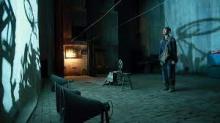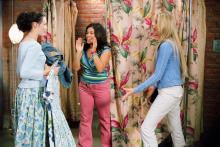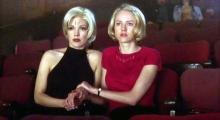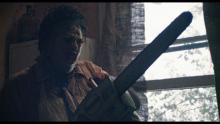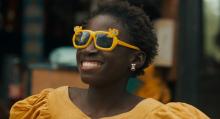Jim Healy is the UW Cinematheque's Director of Programming and a contributing programmer for the Wisconsin Film Festival.
There are no "new" movies or "old" movies. Only movies I have seen and movies I haven't seen. I saw 577 feature-length films in 2021 that were all new to me. My three top favorites are:
GET BACK (2021, Peter Jackson)
LICORICE PIZZA (2021, Paul Thomas Anderson)
ONE SECOND (2020, Zhang Yimou)
And, in alphabetical order, here are 55 more movies that are all exceptionally good.
A CHIARA (2021, Jonas Carpignano)
ABOUT ENDLESSNESS (2019, Roy Andersson)
AN ACT OF MURDER (1948, Michael Gordon)
ANNETTE (2021, Leos Carax)
BACK STREET (1961, David Miller)
LA BELLE DE NUIT (1934, Louis Valray)
THE BLUE KNIGHT (1973, Robert Butler)
BUSTER AND BILLIE (1974, Daniel Petrie)
COMMANDOS STRIKE AT DAWN (1943, John Farrow)
THE DISCIPLE (2020, Chaitanya Tamhane)
ENCANTO (2021, Jared Bush, Byron Howard)
ESCALE (1935, Louis Valray)
FLEE (2021, Jonas Poher Rasmussen)
GAMAK GHAR/THE VILLAGE HOUSE (2019, Achal Mishra)
A GLITCH IN THE MATRIX (2021, Rodney Ascher)
GOLDEN VOICES (2020, Evgeny Ruman)
HEARTWORN HIGHWAYS (1976, James Szalapski)
I WOULDN'T BE IN YOUR SHOES (1948, William Nigh)
IN JACKSON HEIGHTS (2015, Frederick Wiseman)
ISLANDS (2021, Martin Edralin)
KING RICHARD (2021, Reinaldo Marcus Green)
LARCENY (1947, George Sherman)
LET HIM GO (2020, Thomas Bezucha)
THE LIGHT AT THE EDGE OF THE WORLD (1971, Kevin Billington)
LOVERS AND LOLLIPOPS (1956, Ruth Orkin, Morris Engel)
LUCA (2021, Enrico Casarosa)
MAD GOD (2021, Phil Tippett)
MINARI (2020, Lee-Isaac Chung)
NIGHTMARE IN BADHAM COUNTY (1976, John Llewelyn Moxley)
NOBODY (2021, Ilya Naishuller)
PARTY GIRL (1995, Daisy von Scherler Mayer)
THE PURSUIT OF HAPPINESS (1934, Alexander Hall)
A QUIET PLACE PART II (2020, John Krasinski)
REBECCA OF SUNNYBROOK FARM (1938, Allan Dwan)
RED ROCKET (2021, Sean Baker)
THE RESCUE (2021, Jimmy Chin, Elizabeth Chai Vasarhelyi)
THE ROAD TO SALINA (1970, Georges Lautner)
SHANG-CHI AND THE LEGEND OF THE TEN RINGS (2021, Dustin Daniel Cretton)
LES SEINS DE GLACE/ICY BREASTS/SOMEONE IS BLEEDING (1974, Georges Lautner)
THE SHIP THAT DIED OF SHAME/PT RAIDERS (1955, Basil Dearden)
SPIDER MAN NO WAY HOME (2021, Jon Watts)
STILLWATER (2021, Tom McCarthy)
SUN CHILDREN (2020, Majid Majidi)
SUNDOWN (2021, Michel Franco)
SHE WANTED A MILLIONAIRE (1932, John Blystone)
THEY WON’T BELIEVE ME (1947, Irving Pichel)
THREE MINUTES A LENGTHENING (2021, Bianca Stigter)
TRUE MOTHERS (2020, Naomi Kawase)
LA VÉRITÉ (1960, Henri-Georges Clouzot)
THE VICTORS (1963, Carl Foreman)
THE WEB (1947, Michael Gordon)
WEST SIDE STORY (2021, Steven Spielberg)
WHEEL OF FORTUNE AND FANTASY (2021, Ryûsuke Hamaguchi)
WHY DOES HERR R. RUN AMOK? (1977, Michael Fengler, Rainer Werner Fassbinder)
THE YELLOW HANDKERCHIEF (1977, Yoji Yamada)

